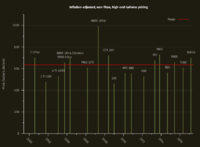Too lazy and tired to read all the comments, but including performance jump from previous generation might be neat to know.
Ti 4600 was the first video I bought back in high school. Worked a ton of minimum wage hours to play UT at an awesome (1600x1200) resolution. Haha. Was the king of lan parties....in the gfx department only.
Ti 4600 was the first video I bought back in high school. Worked a ton of minimum wage hours to play UT at an awesome (1600x1200) resolution. Haha. Was the king of lan parties....in the gfx department only.
![[H]ard|Forum](/styles/hardforum/xenforo/logo_dark.png)



